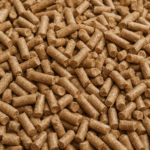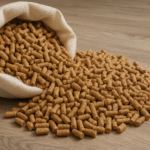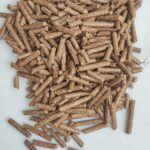Wood Pellet: A Sustainable Biomass Fuel for the Future
Wood pellets are small, cylindrical biomass fuel made from compressed sawdust, wood chips, or agricultural waste.

What is a Wood Pellet?
Wood pellets are small, cylindrical biomass fuel made from compressed sawdust, wood chips, or agricultural waste. They are a clean, renewable energy source and a key alternative to fossil fuels, especially in heating and power generation.
Key Features and Advantages
High Energy Efficiency
Wood pellets have a high calorific value, typically around 4,600–4,900 kcal/kg, making them effective for heating and industrial use.
Low Moisture Content
With moisture levels under 10%, pellets burn cleaner and produce minimal smoke.
Environmentally Friendly
They are carbon neutral, as the CO₂ released during combustion is offset by the carbon absorbed by trees during growth.
Compact and Easy to Transport
Their small, dense form makes storage, handling, and transportation efficient.
Uses and Applications
Residential Heating
Wood pellets are used in pellet stoves and boilers for home heating, especially in cold-climate countries.
Industrial Energy
Power plants and factories use pellets as biomass fuel to replace coal and reduce emissions.
Animal Bedding
Due to high absorbency and low dust, wood pellets are also used in horse stalls and pet cages.
Major Importing and Using Countries
- Europe: UK, Germany, Italy, Sweden – for heating and power plants.
-
Asia: South Korea and Japan – for co-firing with coal in power plants.
-
North America: USA and Canada – both as producers and users.
-
Exporters: Indonesia, Vietnam, Canada, USA, Russia.




